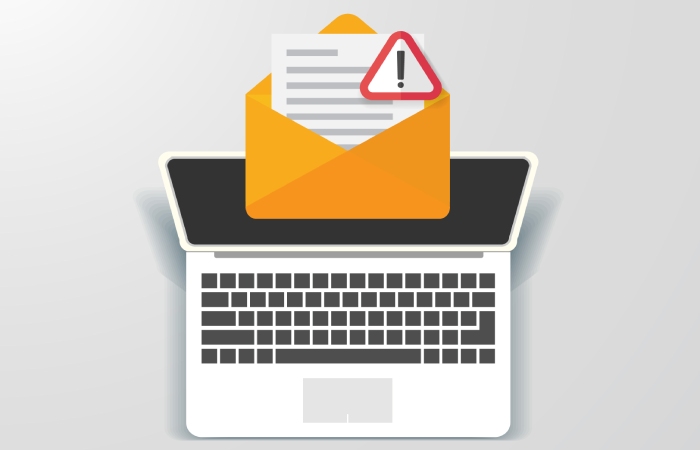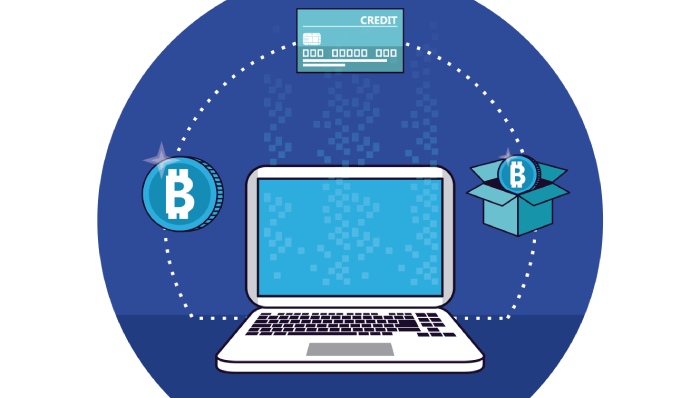If you’ve ever dealt with email security, chances are you’ve heard of DMARC—short for Domain-based Message Authentication, Reporting & Conformance. But what exactly does it do, and why should you care? Well, imagine your email domain is your digital storefront, bustling with clients and sensitive communications. Without proper email authentication, it’s like leaving your front door wide open to spoofers and phishers who can impersonate your brand, wreak havoc, and tank your email domain reputation.
DMARC is a critical email security protocol designed to combat email spoofing and phishing by allowing domain owners to specify how receiving email gateways (think Google, Microsoft, Yahoo, etc.) should handle messages failing SPF and DKIM checks. By implementing a DMARC policy, your business fortifies its defenses, protecting both your customers and your brand from fraudulent actors.
Notably, DMARC integrates sender policy framework (SPF record) and domainKeys identified mail (DKIM signature) mechanisms, ensuring domain alignment for legitimate emails. Beyond preventing fraud, DMARC also empowers domain owners through DMARC reporting—enabling access to DMARC aggregate reports and forensic reports. These insights are goldmines for monitoring attempts of email abuse and refining your email security stance.
Key Components of a DMARC Record Explained
The backbone of DMARC lies in its record, published in your DNS as a TXT record, which serves as the instruction manual to email gateways like those from Cisco, Mimecast, and Barracuda Networks. Let’s break down the DMARC record syntax and its vital DMARC tags:
- v=DMARC1: The version tag, always required.
- p= (DMARC policy): Defines the enforcement action. Options include:
- policy none: Monitor only, no action taken—ideal for initial deployments.
- policy quarantine: Emails failing checks are placed in the recipient’s spam/junk folder.
- policy reject: Emails are outright rejected—a strict enforcement that maximizes protection.
- sp= (subdomain policy): Specific DMARC policy for subdomains, if different from the main domain.
- pct= (percentage tag): Controls how much of your mail is subjected to the DMARC policy; useful during gradual roll-outs.
- rua= (aggregate reports URI): Where DMARC aggregate reports should be sent. These reports provide an overview of all mail passing through SPF and DKIM validation.
- ruf= (forensic reports URI): Specifies where forensic reports (detailed failure reports) are sent.
- adkim= and aspf=: Control the strictness of domain alignment for DKIM and SPF respectively. For example, “s” for strict, and “r” for relaxed alignment.
The right combination of these tags tailored to your business’s email usage patterns can dramatically improve your email fraud detection capabilities and email deliverability.
Preparing Your Domain for DMARC Implementation
Before you dash off to generate your DMARC record, preparation is key. Start by ensuring the foundational email authentication mechanisms are in place:
- SPF Record Setup: Configure a precise SPF record listing permitted mail servers, whether you use Google Workspace, Amazon SES, SendGrid, or your in-house mail server configuration. Proper SPF setup ensures sender IP addresses are authorized.
- DKIM Signature Implementation: Set up DKIM by publishing your public key in DNS and configuring your email gateway or mail server to sign outgoing emails. This acts like a cryptographic seal of authenticity, relying on public key infrastructure and careful key management.
- Domain Owner Verification: Verify your domain ownership through platforms like Google Search Console or Microsoft 365 admin centers. This step bolsters email compliance and is critical for DMARC reporting.
- DNS Configuration and Management: Use robust DNS management tools such as Cloudflare or your domain registrar’s interface to publish your DMARC TXT record. Pro tip: be mindful of DNS propagation times—it can take a while for your changes to reflect globally.
- Bounce Handling and Email Header Analysis: Implement bounce handling mechanisms and educate your team on reading email headers to interpret DMARC enforcement results effectively.
- Leverage DMARC Tools: To streamline setup, consider DMARC wizards and TXT record generators offered by vendors like Dmarcian, DMARC Analyzer, or OpenDMARC to minimize human errors in record syntax.
How to Generate a DMARC Record Step-by-Step
Alright, buckle up. Here’s my tried-and-true recipe for cooking up a robust DMARC record:
Step 1: Assess Your Email Environment
Audit every mail source—internal servers, third-party marketing platforms like SparkPost or Postmark, CRM tools, and even Facebook or Yahoo integrations. This inventory dictates your SPF and DKIM setups and informs your DMARC tags.
Step 2: Create Your Initial DMARC Record
You can use a TXT record generator or DMARC wizard (I’ve had good luck with those from Valimail and Agari). A simple initial example might be:
“`
v=DMARC1; p=none; rua=mailto:dmarc-aggregate@yourdomain.com; ruf=mailto:dmarc-forensic@yourdomain.com; pct=100; adkim=r; aspf=r
“`
This instructs email servers to send you full DMARC reports but only monitor email compliance without discarding suspect mail.
Step 3: Publish the DMARC DNS TXT Record
Log in to your DNS management tool, whether it’s Cloudflare or your registrar’s dashboard. Add a TXT record under `_dmarc.yourdomain.com` with the DMARC record generated. Remember, DNS propagation isn’t instant, so give it time.
Step 4: Monitor DMARC Aggregate Reports
Use a DMARC parser or a paid DMARC analyzer like those from Proofpoint, Cisco, or Mimecast that decode voluminous DMARC aggregate feedback into actionable insights. Watch for patterns of SPF or DKIM failures, unauthorized mail sources, and potential email spoofing attempts.
Step 5: Adjust and Enforce
Once confident that legitimate emails pass your authentication protocols, gradually increase enforcement by switching `p=none` to `p=quarantine` and ultimately `p=reject`. Don’t forget to fine-tune subdomain policies with the `sp` tag if you use subdomains extensively.
Choosing the Right DMARC Policy for Your Business Needs
Selecting your DMARC policy is akin to choosing your battle strategy in the war against email fraud:
- Policy None (`p=none`): The “learning phase” or email compliance sentinel. It’s great for businesses new to DMARC who want to gather intelligence without risking email deliverability.
- Policy Quarantine (`p=quarantine`): A middle-ground approach, this policy places suspicious emails into spam folders, alerting recipients and protecting against low-grade spoofing attacks. Recommended for organizations with moderate exposure or gradual rollouts.
- Policy Reject (`p=reject`): The sword of email authentication, rejecting all non-compliant messages at the gateway level. Ideal for high-security enterprises such as financial institutions or those heavily targeted by phishers. This level of DMARC enforcement maximizes email phishing protection but requires rigorous monitoring beforehand.
Don’t forget about subdomain policy (`sp` tag) if your brand communicates through multiple subdomains—setting a stricter or more permissive policy per subdomain can prevent weak links in your email security protocols.
Percentage enforcement via the `pct` tag allows you to phase in policies—useful when transitioning from monitoring to strict rejection without sudden deliverability issues. And to cap it off, comprehensive DMARC reporting keeps you informed, ensuring your email domain reputation stays pristine.
If you ever feel overwhelmed, remember names like Dmarcian, Agari, Valimail, and DMARC Analyzer—they specialize in transforming DMARC aggregate reports and forensic reports into digestible dashboards, helping even the most novice sysadmins feel like email security wizards.
Integrating SPF and DKIM with Your DMARC Record
Alright, let’s talk about the dynamic trio in email authentication: SPF, DKIM, and DMARC. Before your DMARC policy starts flexing its muscles to ward off email spoofing and phishing, you need to ensure your SPF record and DKIM signature are in sync and above board.
The SPF record is your sender policy framework’s main player, a DNS TXT record declaring which mail servers are allowed to send emails on behalf of your domain. Think of it as your email bouncer, filtering out uninvited senders. Meanwhile, the DKIM signature ties your email with cryptographic public key infrastructure magic. This signature, embedded in your email headers, validates that the message content wasn’t tampered with during transit, enhancing trust and guarding against tampering.
Now, when configuring DMARC, domain alignment is vital. Your DMARC policy checks if the SPF or DKIM identifier aligns with the domain found in the “From” header, ensuring the email is genuinely from you. The DMARC record syntax allows specifying alignment modes using the adkim tag for DKIM and aspf tag for SPF—with options like relaxed or strict to tune how sensitive the checks are.
Setting up a solid DMARC record involves creating a DNS TXT record with the right DMARC tags. At a bare minimum, include the policy (p=none, quarantine, or reject), and specify reporting addresses with the rua and ruf tags for aggregate and forensic reports respectively. Add the pct tag to determine what portion of your traffic the policy applies to, maybe start low to gently ease into enforcement while monitoring results.
DNS management tools from Cloudflare or Amazon SES help streamline the process, and TXT record generators or DMARC wizards can be lifesavers. Don’t forget the subdomain policy (sp tag) to define rules for your domain’s offspring, particularly useful if your organizational mail is segmented.
Testing and Validating Your DMARC Record
Once your DNS configuration reflects your DMARC record, patience is a virtue—DNS propagation can take anywhere from minutes to hours or even a day depending on your provider, whether you’re with Google, Microsoft, or Cloudflare.
Testing is non-negotiable because the last thing you want is legitimate emails getting bounced or quarantined due to misconfigured policies. An effective method is setting your DMARC policy to policy none initially while enabling DMARC reporting. This gives you a bird’s-eye view via DMARC aggregate reports without impacting deliverability.
Testing tools like DMARC Analyzer, Dmarcian, or OpenDMARC provide real-time insights, parsing through your DMARC aggregate feedback to highlight authentication failures and domain misalignment issues. They often integrate with email security protocols and gateways such as Mimecast or Barracuda Networks, helping identify rogue email sources or misconfigured mail servers.
Remember to validate your TXT record with syntax checkers; even a minor error in the DMARC record syntax can crash your entire authentication scheme. Keep an eye out for misplaced semicolons or incorrect tags such as a misspelled rua or ruf, which would sabotage your DMARC reporting. These errors often confound teams until a fresh set of eyes or a DMARC parser tool spots them.
Monitoring DMARC Reports to Improve Email Security
If you thought deploying DMARC was the endgame, think again. Constant vigilance through DMARC reporting is the secret sauce to continuous email fraud detection and phishing protection.
Aggregate reports (usually sent to the rua email addresses) contain bulk statistics of email authentication results—like how many emails passed SPF, failed DKIM, or triggered alignment failures. Forensic reports (sent to ruf addresses) get into nitty-gritty details, capturing sample emails that were flagged under your DMARC enforcement, enabling granular email header analysis.
Using platforms like Agari, Proofpoint, or Valimail streamlines interpreting this flood of data, turning raw reports into actionable insights that inform policy adjustments or if you need to tweak your sender policy framework or key management strategies. Sharing results through a modern intranet can help teams access the information in one place and respond faster to suspicious activity.
Watching for suspicious spikes or domains failing SPF/DKIM alignment can tip you off to emerging email spoofing attempts. Early identification helps protect your email domain reputation, crucial when dealing with major inbox providers like Yahoo, Gmail, or Microsoft 365, as they penalize poorly authenticated emails by reducing email deliverability.
Common Challenges and How to Troubleshoot Them
Ah, the inevitable bumps in the road! Implementing DMARC isn’t always a stroll in the park—it involves having to deal with bounce handling, tricky DNS configurations, inconsistent mail server configuration, and the infamous email gateway blunders.
One common challenge is incomplete DNS TXT records or propagation delays leading to inconsistent enforcement. A quick fix? Double-check DNS settings in Cloudflare or AWS Route 53, and use real-time DNS lookup tools for verification.
Another pitfall is incorrect SPF record limits. SPF has a DNS lookup limit of ten; exceeding this causes SPF failures. Tools like the SPF record checkers can help optimize this by flattening or trimming your sender SPF list.
Sometimes, misalignment between your DKIM signature and DMARC policy causes emails to move into quarantine or reject unexpectedly. Review your DKIM key management and ensure your mail servers (whether using SparkPost, SendGrid, or Amazon SES) sign outgoing emails properly.
Troubleshooting forensic reports can be a headache because they might contain sensitive information—handle with care and use DMARC analyzers to parse details safely.
And if you suddenly realize your pct tag is set to 100% prematurely, expect potentially massive deliverability issues—scale your enforcement gradually!
Best Practices to Maintain and Update Your DMARC Settings
The digital landscape evolves, and so should your DMARC settings. Consider this your regular email hygiene routine—keep your DMARC record up-to-date to stay ahead of email fraud detection curves.
Regularly review aggregate and forensic DMARC reports to catch new threats or legitimate senders slipping through the cracks. If you add new email gateways like Cisco’s or Symantec’s services, update your SPF records and confirm DKIM signing is operational.
Maintain robust key management practices for your DKIM keys—rotate keys periodically to avoid cryptographic vulnerabilities and keep public key infrastructure solid.
Keep an eye on changes in email security protocols and standards published by industry leaders, and be ready to update your DMARC tags accordingly. For example, tweaking your policy from quarantine to reject once confident that your legitimate email flows are authenticated boosts email spoofing prevention.
Engage robust DNS management tools for automation — platforms like Dmarcian or Valimail provide automation features for DMARC record publishing and consistent DNS TXT record monitoring, reducing manual errors and promoting email compliance.
FAQs
What is the role of SPF and DKIM in DMARC?
SPF and DKIM serve as foundational email authentication mechanisms that DMARC relies on for identity validation. SPF verifies the sender’s IP against an allowed list in a DNS TXT record, while DKIM uses cryptographic signatures to protect message integrity.
Why is domain alignment important in DMARC?
Domain alignment ensures that the domain in the “From” header aligns with the domains authenticated by SPF and/or DKIM. This prevents attackers from spoofing your domain and improves email phishing protection by stopping unauthorized senders.
How do DMARC aggregate and forensic reports differ?
Aggregate reports provide summary statistics on email authentication performance across your domain, while forensic reports offer detailed analysis of individual messages that fail DMARC enforcement, useful for deep email header analysis and fraud detection.
How can I avoid SPF record lookup limit issues?
To avoid hitting the ten DNS lookup limit imposed by SPF, optimize your SPF record by flattening includes, removing redundant entries, and using DNS management tools to regularly audit your DNS TXT records.
What happens if I enforce a DMARC policy too aggressively too soon?
Enforcing a DMARC policy like “policy reject” or “policy quarantine” prematurely can cause legitimate emails to bounce or be sent to spam. It’s recommended to start with a “policy none” and monitor DMARC reporting before ramping up enforcement.
Key Takeaways
- Integrate SPF and DKIM with your DMARC record to ensure proper email authentication and domain alignment.
- Use DMARC aggregate and forensic reports via tools like DMARC Analyzer and Dmarcian for continuous email fraud detection and policy tuning.
- Regularly test DMARC records for syntax errors and propagation issues to maintain email deliverability and compliance.
- Troubling SPF lookup limits and DKIM signing failures are common hurdles; address these with proper DNS management and mail server configuration.
- Maintain and update your DMARC settings with evolving email security protocols and rotate DKIM keys to sustain strong email domain reputation.






